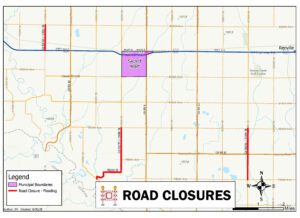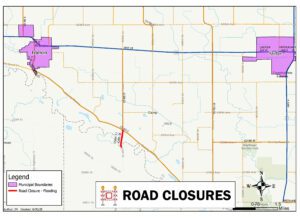Scott Refsland, Director
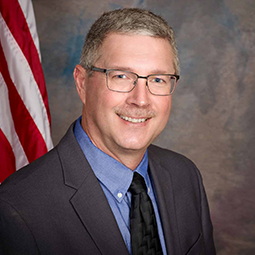
Hours and Location
Hours:
Monday – Friday
8:00 a.m. – 4:30 p.m.
Address:
Government Services Center
105 South 5th Street, Suite 311
Olivia, MN 56277
Phone: 320-523-3768
Fax: 320-523-3843
Kelly O’Neill,
Assistant Director
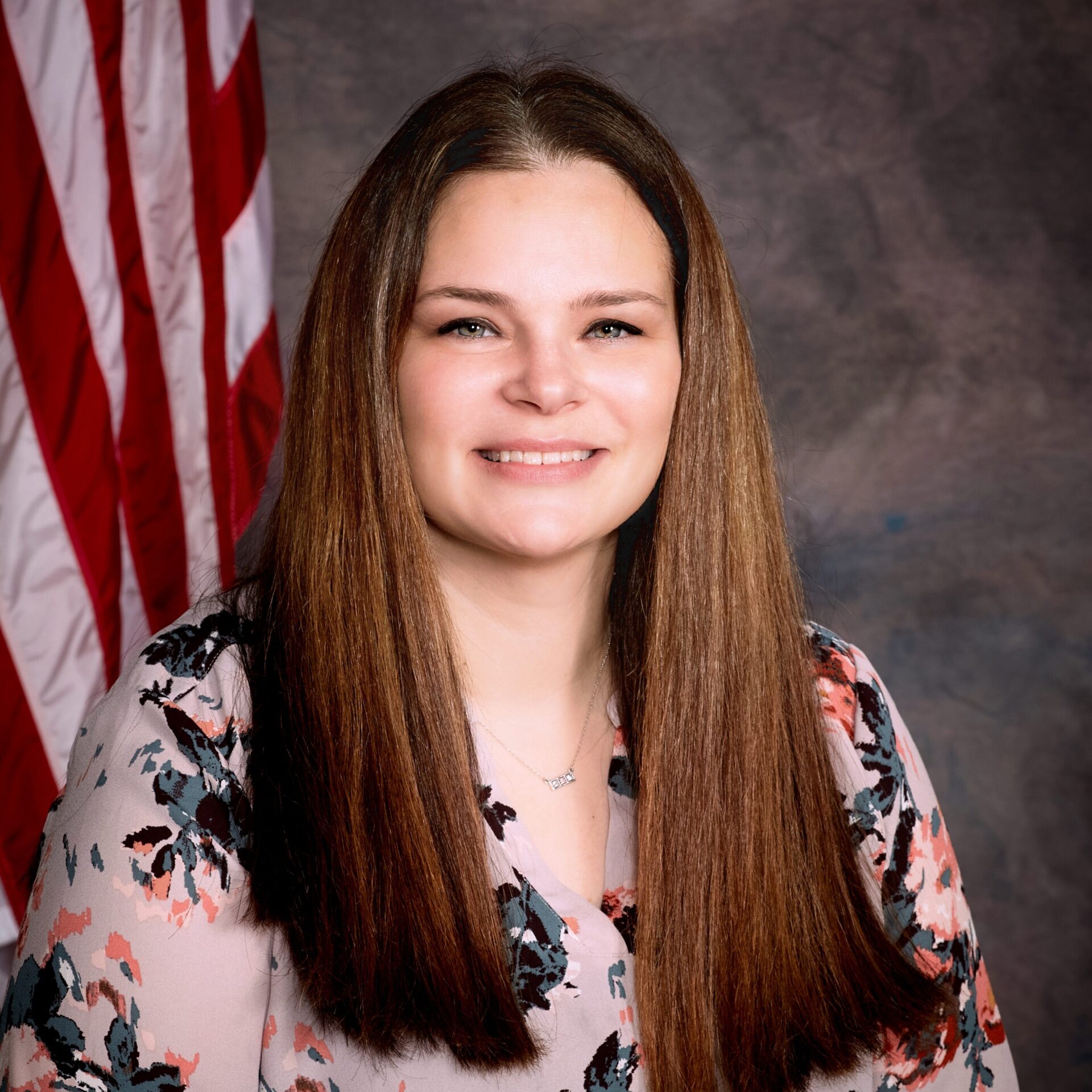
Environmental Services administers environment and planning programming. The Department also offers technical advice and information in areas of planning, zoning, mining, land subdivision, land use, feedlot, and sewage treatment system permitting. If you are not sure who you need to talk to, please call the main office phone at 320-523-3768.
Boards / Commissions
Aquatic Invasive Species (AIS)
What are Aquatic Invasive Species?
Aquatic invasive species (AIS) are nonnative plants, animals, or pathogens that live primarily in water and thrive in their new environment, often out-competing native species. In Minnesota there are many aquatic invasive plants and animals. Well known AIS include: zebra mussels, curly-leaf pondweed, Eurasian watermilfoil, and carp.
Renville County Accepting Grant Applications to Address Aquatic Invasive Species
Renville County is accepting grant funding requests for innovative ideas relating to aquatic invasive species prevention, detection, management, and leadership. Funding requests are open to all Renville County residents, service and non-profit organizations, public and private schools, and local units of government.
There is no minimum or maximum grant funding amount that can be requested. Grant funding allocations may vary based on funding availability and number of applications received.
Questions regarding the grant application can be directed to Scott Refsland, Environmental Services Director, at 320-523-3664 or Email Scott .
Feedlots
When do I need to register as a feedlot?
- When there is 10 animal units or more which is located within the Shoreland District.
- When there is 50 animal units or more located in a non-Shoreland District.
When do I need a feedlot permit?
A new or expanded feedlot capable of holding 300 animal units or more and meeting the requirements in Minnesota Rules Chapter 7020 shall apply for a state feedlot permit. Due to the complexity of feedlot rules and regulations, please contact the Environmental Services Office at 320-523-3768.
When is a Conditional Use Permit needed?
- Any new feedlot greater than 300 animal units.
- Any expansion of an existing feedlot that will exceed 300 animal units.
- Any expansion of a legal, nonconforming feedlot greater than 300 animal units.
- Any change in ownership of an existing feedlot greater than 300 animal units, which is not currently permitted by a Conditional Use Permit.
- Any expansion of an existing feedlot in the Shoreland District.
- Any expansion of any existing feedlot within one mile of a city boundary.
- Any feedlot that requires a NPDES Permit.
- Any feedlot requiring an Environmental Assessment Worksheet (EAW). The permitting authority shall be the regulatory unit of government responsible for all required EAWs.
- Whenever any existing or proposed feedlot operation proposes the construction of an above ground manure storage structure.
- Whenever there is proposed to be a change in animal type at an existing feedlot greater than 300 animal units, as defined by this Ordinance.
What is a Conditional Use Permit?
A Conditional Use Permit is a “land use” permit that involves a public hearing, review by the Renville County Planning Commission, and action or decision by the Renville County Board of Commissioners.
What is a NPDES Permit?
A National Pollution Discharge Elimination System (NPDES) permit is issued by the Minnesota Pollution Control Agency for the purpose of regulation the discharge of pollutants from point sources including concentrated animal feeding operations.
For more information on feedlot permitting contact the Environmental Services Office at 320-523-3768.
Mining / Extraction
Renville County is home to numerous mining operations that extract and process materials such as sand, gravel, granite, kaolin clay (used for pottery, paper coating, and other unique applications), and fill or borrow soils.
The Renville County Land Use Ordinance (Chapter 7) requires any person or company that proposes the mining or extraction of sand, gravel, granite, or any other mineral to apply for and be granted a Interim Use Permit (IUP) by the Renville County Board of Commissioners.
For more information on mining/extraction permitting contact the Environmental Services Office at 320-523-3768.
Permits / Forms
Conditional Use Permit
A Conditional Use Permit (CUP) allows Renville County to consider land uses that are not permitted in a district but may be acceptable if conditions are attached to protect the adjacent property owners and public interest. A CUP requires a public hearing by the Renville County Planning Commission. Conditions may be applied to the issuance of the permit and a periodic review may be required. The CUP process will take approximately 6 to 8 weeks.
Examples of common CUP’s:
- Commercial and industrial uses
- Communication towers
- Feedlots over 300 animal units
- Solar gardens
- Wind energy conversion systems
Please contact the Environmental Services office at 320-523-3768 or Email Environmental Services to apply.
Interim Use Permit
An Interim Use Permit is required for the temporary use of a property until a particular date, until the occurrence of a particular event, or until zoning regulations no longer permit it as determined by Renville County.
Examples of common Interim Uses:
- Mining
- Home Occupation
- Temporary Dwellings
Please contact the Environmental Services office at 320-523-3768 or Email Environmental Services to apply.
Variance
A Variance grants permission to vary from the zoning ordinance’s standard requirements. Variances may be granted when it is determined that the strict enforcement of zoning regulations would cause practical difficulties, A variance, however, cannot be granted that would allow a use prohibited in the property’s zoning district.
Examples of common Variances:
- Setbacks for property line or road right of way
- Lot width or depth
- Height restrictions
Please contact the Environmental Services office at 320-523-3768 or Email Environmental Services to apply.
Land Use Permit
A land use or zoning permit is required for any structure erected, expanded, enlarged, intensified, or moved in. The permit indicates that the existing or proposed structure and the use of the land comply with regulations in the Land Use Ordinance. No site preparation work may occur prior to the issuance of a land use permit unless prior approval has been granted by the Environmental Service Department.
Examples of projects that do NOT require a Land Use Permit:
- Building interior work
- Roof, windows, or siding
Special Vehicle Use Permit
The Renville County Special Vehicle Use on Designated County Roadways Ordinance authorizes the use and operation of all-terrain vehicles, mini trucks, utility task vehicles, and motorized golf carts on designated Renville County roadways. This Ordinance does not permit the use and operation of these recreational vehicles on federal or state highways and streets or roads under the jurisdiction of a city or township.
A Special Vehicle Use (SVU) Permit must be applied for and approved for each recreational vehicle intended to be operated on a designated county roadway.
- A SVU Permit is valid for two calendar years. Recreational vehicle owners are responsible for the renewal of the SVU Permit prior to expiration.
- The permit, for a fee of $10.00, can be purchased online or in person at the Environmental Services office.
- The SVU Permit sticker shall be located on a plate that is clearly visible on the back of the all-terrain vehicle, mini truck, utility task vehicle, and motorized golf cart.
- Email Email Special Vehicle Use Permits or call 320-523-3768 with any questions.
Driveway Access Permit
Access drives onto County roads require an access permit from the Renville County Division of Public Works. Contact your township board for any new access onto a township road.
Handicap Accessibility Permit
All public and most commercial / industrial buildings require a handicap accessibility permit subject to the Handicap Accessibility Requirements of the Minnesota State Building Code. For a list of Building Inspectors in Renville County please contact the Environmental Services Office at 320-523-3768.
New Address Request
A New Address Request is required for new building sites. This will be your 911 address for the building/structure. Please provide a map or drawing with the New Address Request form that easily identifies where the driveway access will be located (Examples include GPS coordinates or measurements for landmarks).
If you have any questions, please contact the Environmental Services Office at 320-523-3768.
Subsurface Sewage Treatment System (SSTS)
An SSTS permit is required whenever a sewage treatment system in Renville County is installed, replaced, altered, repaired (with some exceptions), or extended.
Both a Septic Permit Application and a Septic Design Form must be submitted.
What is an SSTS?
A Subsurface Sewage Treatment System (SSTS) is a system that treats wastewater for one specific residence. Wastewater includes all bathroom, kitchen, and laundry water. Proper treatment reduces health risks to humans and animals and prevents surface and groundwater contamination.
An SSTS permit is required whenever a sewage treatment system in Renville County is installed, replaced, altered, repaired (with some exceptions), or extended.
What are the components of an SSTS?
A complete SSTS is made up of three primary components:
- Plumbing (Wastewater Collection): All water used in bathing, toilets, laundry, and dishwashing must be delivered to the septic tank via plumbing pipes.
- Septic Tank (Primary Treatment): Naturally occurring bacteria in the sewage begins to breakdown materials in the tank. Pathogens in the waste are NOT destroyed in the septic tank.
- Soil Treatment (Final Treatment): Soil treatment kills disease-causing organisms in the sewage and removes nutrients. This portion of the system would consist of treatment options such as a rock-filled or gravelless pipe trench, pressure bed, or mound.
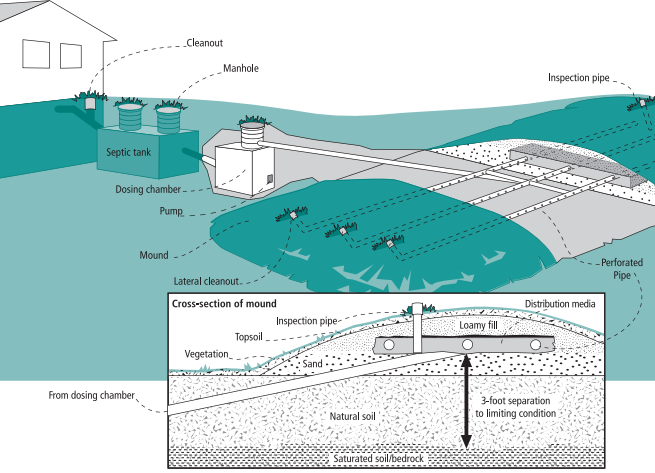
For more information on SSTS’s go to the University of Minnesota Onsite Sewage Treatment Programs website.
How would I know if my septic system is failing or non-compliant?
A properly functioning septic system is designed to treat the wastewater from your home to reduce potential health risks to people and to prevent surface and groundwater contamination.
Does your septic system:
- Discharge into a tile line, drainage ditch, or other waters?
- Discharge to the ground surface?
- Occasionally back up into your home?
If any of these are true, then your system would be considered failing or non-conforming.
How do I upgrade or install an SSTS?
MN Rules Ch. 7080-7083 and Chapter 4 of the Renville County Land Use Ordinance – Sewage and Wastewater Treatment Regulations regulate the design and installation of a septic system. The septic design/application takes into consideration characteristics specific to your site including soil type, size of the house, and wastewater-contributing appliances. The first step to upgrade or install a new system is to contact a licensed septic designer. The system must be designed and installed by a licensed septic contractor. For a list of licensed septic designers and installers, contact the Renville County Environmental Services or visit the MN Pollution Control Agency (MPCA) website.
How do I maintain my SSTS?
The septic tank MUST be periodically cleaned (pumped) to remove accumulated solids. If solids are not occasionally removed, they may enter the soil treatment system and cause expensive damage or cause sewage to back up into your home. State rules require that septic tanks be pumped a minimum of once every three years. For a list of licensed septic pumpers, contact the Renville County Environmental Services or visit the Minnesota Pollution Control Agency (MPCA) website.
For new installation, the tank should be cleaned after six to 12 months of use as a precautionary measure to ensure good bacterial activity and proper functioning. Once a system is known to be operating properly, the University of Minnesota provides a worksheet that can be used as a guideline for cleaning frequency. Remember, maintenance of the septic system is the homeowner’s responsibility.
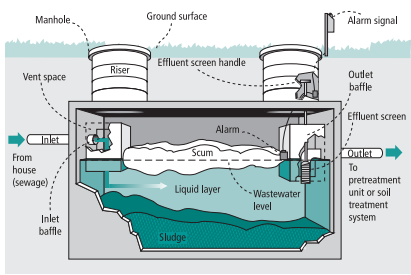
Is there assistance available for SSTS upgrades?
Low Interest Septic Loans
The Renville County Low Interest Septic Loan Program is funded through the Minnesota Pollution Control Agency (MPCA) in conjunction with the Clean Water Partnership (CWP).
- A 7-year loan at 3% interest.
- The property owner(s) needs to complete an application and return it to the Environmental Services office along with a written cost estimate from a licensed septic installer. There is a $30 non-refundable application fee.
- The loan is processed through Renville County and is assessed to the landowner’s property.
General Reminders:
Do not assume the loan has been approved. Wait until you receive verification!
Remember that a septic loan will not be approved until the application and all written cost estimate have been submitted. We also need written cost estimates for other associated contractor expenses (i.e. pumpers, electricians, plumbers) if they are to be included in the loan.
Not eligible: septic systems for new building sites, after-the-fact construction.
Please contact the Environmental Services office at 320-523-3768 to apply.
Income-Based Septic Grants
Renville County Environmental Services is pleased to be able to offer an income-based grant program available to property owners in Renville County that have an existing noncompliant septic system. Funds are intended to fix septic systems that are currently failing codes or functionality. These dollars are made possible through a grant received from the Minnesota Pollution Control Agency (MPCA) to support the work of the Clean Water Legacy Act.
There is a limited amount of funding available and funds will be distributed in the order the applications are received.
Property Transfer SSTS Disclosure
Following acknowledgment by the Buyer and the Seller, a completed Property Transfer SSTS Disclosure Form and the supporting documentation(s) are required to be filed with the Renville County Auditor/Treasurer along with the Certificate of Real Estate Value. A copy of this Disclosure Form shall also be submitted to the Renville County Environmental Services Office at or prior to the date of closing.
Escrow Agreements are required for all non-compliant systems at the time of sale and transfer. The Escrow Agreement shall include a dollar amount that is equal to the cost estimate from a licensed installer or is shall equal the average cost of a mound system from the previous year. To determine the average cost of a mound system, contact Environmental Services.
A Buyer/Seller Agreement is also required for non-compliant systems, which states who will be responsible for upgrading the system.
Holding Tank Servicing Contract
A Holding Tank Servicing Contract should be filled out by the Property Owner and Licensed Septic Maintainer. The Maintainer would then be allowed to pump liquids and solids from the holding tank and transport septage to a licensed treatment facility or land apply septage.
Where can I find additional information on SSTS’s?
For more information on septic systems visit the following websites:
Email Septic or call 320-523-3768 with any questions.
Water Management
Renville County is located within four major watersheds. The first three are part of the Minnesota River Drainage Basin and include Hawk Creek, High Island Creek and Middle Minnesota River watersheds. The fourth, the Crow River watershed, is part of the Upper Mississippi River Drainage Basin.
One Watershed, One Plan (1W1P)
A One Watershed, One Plan (1W1P) is a is a collaborative planning process where all stakeholders within a single watershed work together to develop a comprehensive management plan for that area.
About One Watershed, One Plan’s (1W1P)
According to Minnesota Statutes §103B.801, comprehensive watershed management plans must address:
- Surface water and ground water quality protection, restoration, and improvement, including prevention of erosion and soil transport into surface water systems
- Restoration, protection, and preservation of natural surface water and groundwater storage and retention systems
- Promotion of groundwater recharge
- Minimization of public capital expenditures needed to correct flooding and water quality problems
- Wetland enhancement, restoration, and establishment
- Identification of priority areas for riparian zone management and buffers
- Protection and enhancement of fish and wildlife habitat and water recreational facilities
The purpose of a 1W1P program is to develop comprehensive management plans that:
- Align local water planning purposes and procedures under this chapter and chapters 103C and 103D on watershed boundaries to create a systematic, watershed-wide, science-based approach to watershed management;
- Acknowledge and build off existing local government structure, water plan services, and local capacity;
- Incorporate and make use of data and information, including watershed restoration and protection strategies under section 114D.26;
- Solicit input and engage experts from agencies, citizens, and stakeholder groups; focus on implementation of prioritized and targeted actions capable of achieving measurable progress; and
- Serve as a substitute for a comprehensive plan, local water management plan, or watershed management plan developed or amended, approved, and adopted, according to chapter 103B, 103C or 103D.
Plans
Central Minnesota River Watershed Partnership (Hawk Creek and Middle Minnesota River Watersheds)
The Hawk Creek-Middle Minnesota Comprehensive Watershed Management Plan (HCMM CWMP)
also known as Central Minnesota River Watershed Partnership, represents over two years of collaborative work between six entities that have sought to understand, improve, and protect the surface and groundwater resources of the region. The planning area (displayed in the map below) encompasses five counties (Chippewa, Kandiyohi, Nicollet, Renville and Sibley) and is nearly 1,262 square miles. It is home to three watershed zones that encompass both high-valued recreational lakes and streams, as well as many impaired waters impacted by intensive row crop agriculture and increased sediment and pollutants transported by rainfall. These waters drain to the Minnesota River, one of ten major river basins in Minnesota, and then ultimately to the Mississippi River.

Lower Minnesota River West Partnership (High Island Creek Watershed)
The Lower Minnesota River West Partnership (Partnership) is a group of the Counties and Soil and Water Conservation Districts (SWCDs) of McLeod, Nicollet, and Sibley, and High Island Creek Watershed District. The Partnership covers an area north and west of the Minnesota River herein referred to as the “Lower Minnesota River West watershed” or “planning area.” The Partnership was formed to develop a Comprehensive Watershed Management Plan through the One Watershed, One Plan (1W1P) program detailed in Minnesota Statutes 103B.801. Through the 1W1P program, the local governments (Partners) prepared the below plan to guide cooperative water and natural resource management actions over the next 10 years.

South Fork Crow River Watershed (Crow River Watershed)
Local partners with the South Fork Crow River Watershed developed the South Fork Crow River Watershed Comprehensive Watershed Management Plan through the One Watershed One Plan (1W1P) program. The 1W1P program is administered by the Board of Water and Soil Resources (BWSR) through Minnesota Statutes§103B.801. This resulting plan is not a regulatory document. The plan instead focuses on voluntary conservation and provides a framework to guide watershed managers (local counties, soil and water conservation districts, and the watershed district) as they work to manage the watershed’s natural resources.
The South Fork Crow River Watershed planning area is a predominately agricultural watershed in central Minnesota. The watershed is 72 miles wide when measured between the cities of Independence and Willmar. The watershed is roughly 1,280 square miles and contains 179 lakes greater than 10 acres and over 1,420 perennial river and stream miles. It also crosses eight different county boundaries (Kandiyohi, Renville, Meeker, McLeod, Sibley, Wright, Carver, and Hennepin). The main river is the South Fork Crow River which flows from west to east and connects with the North Fork Crow River just upstream of Rockford, MN, before continuing to the Mississippi River as the Crow River.
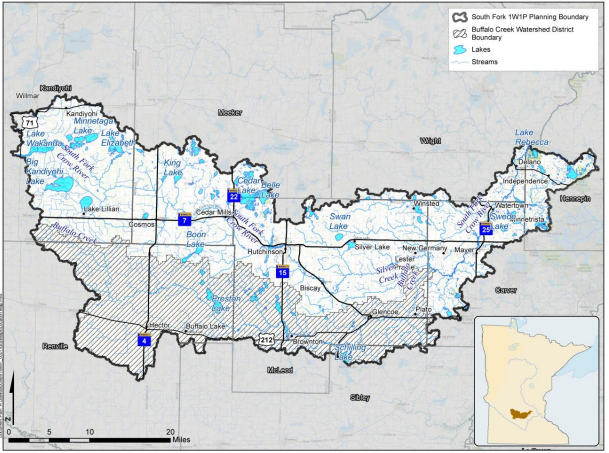
Wells
Well Loans
Renville County Environmental Services offers Well Loans through the Minnesota Department of Agriculture AgBMP loan program. Financing is available for loans to repair or replace existing damaged, noncompliant, or contaminated wells only.
A list of licensed well contractors is available upon request or by visiting the MN Department of Health website.
- A 10-year loan at 3% interest.
- The property owner(s) need to complete an application and return it to the Environmental Services office along with a written cost estimate from a licensed well contractor. There is a $30 non-refundable application fee.
- The loan is processed through Renville County and is assessed to the landowner’s property.
Ineligible activities include: refinancing of a previously installed well, a new well where a well does not currently exist, a new well to resolve inadequate yield issues, or wells not used for drinking water purposes for humans or livestock, such as for irrigation or industrial processing.
For more information and well loan application, please contact the Environmental Services office at (320) 523-3768 or Email Environmental Services .
Well Sealing Cost-Share Program
Renville County Environmental Services collaborates with the Renville County Soil and Water Conservation District (SWCD) to administer a priority well sealing cost-share program. Landowners needing to seal an abandoned well are eligible to receive 50% (up to $500) of the cost to seal the well. A cost-share application needs to be signed prior to work being started.
For more information regarding the well sealing cost-share program, please contact the Renville County SWCD office at:
Renville County SWCD
1008 West Lincoln Avenue
Olivia, MN 56277
320-523-1559
Renville County Soil & Water Website

